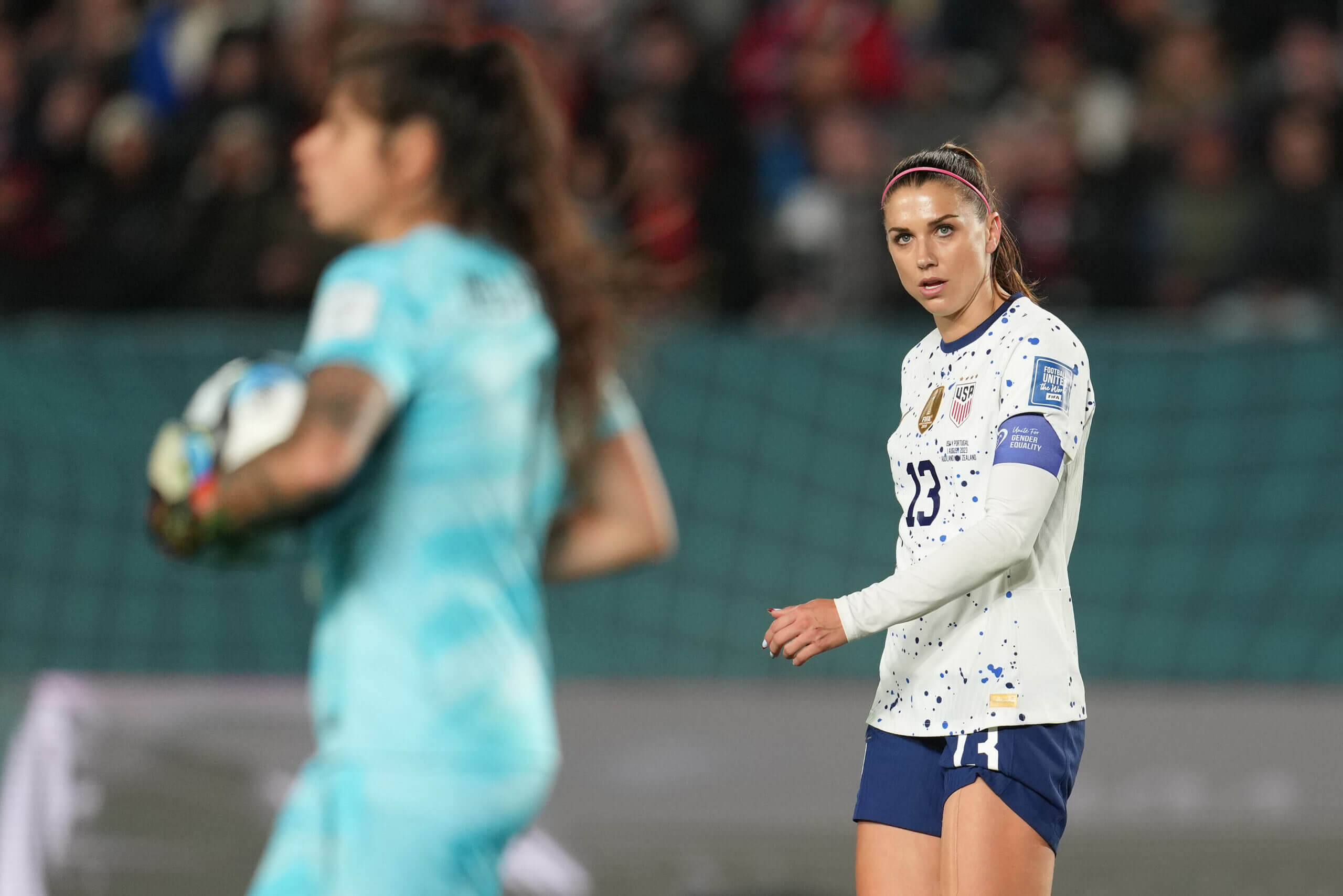The priority for the U.S. women’s national team was always to qualify for the next round first and win second. Head coach Vlatko Andonovski said as much ahead of Tuesday’s Group E final game against Portugal. Despite achieving their first goal, the scoreless draw left more questions than answers — specifically for the U.S. attack.
“One thing that I want to say is that this team wanted to win this game more than anything else,” said Andonovski.
With a starting attacking front three of Alex Morgan, Sophia Smith and Lynn Williams — and later Trinity Rodman — a combined four goals against Vietnam and the Netherlands isn’t indicative of the No.1 team in the world and reigning back-to-back champions. Even 38 minutes from Megan Rapinoe wasn’t enough to produce something against Portugal. Average won’t cut it in the knockout rounds of the World Cup, especially one that has shown the gap closing among nations.
Despite having more total shots and more shots on target, the U.S. hardly troubled Ines Pereira in Portugal’s net. The Portuguese goalkeeper did not have to stretch out at any point to make a save. The USWNT also only had 18% possession in the final third.
Most of the open-play chance creation (27%) came down the middle for the USWNT, showing numerically how the midfield struggled with ball retention as well as how the wide forwards failed to make their possession count from the flanks. The USWNT’s best moments came when they tried to slide a ball through for Morgan. Unfortunately for the forward, who is currently underperforming her expected goals by 2.14 and shot placement by 1.24, she wasn’t able to find the back of the net whenever she was played through.
“We missed some big chances. I did as well,” Morgan said after the game. “We should’ve put some in the back of the net and we didn’t. We own that. We’re not happy with the performance we put out there but, at the same time, we’re moving on.”

It’s not just Morgan who’s underperforming. Smith, Rapinoe, Rodman and Williams haven’t shown the danger they possess on the ball apart from the first game against Vietnam where Smith grabbed a brace. Smith is leading the forwards in the average carry distance (7.1 yards) but, when looking at the group overall, the statistics show that they are reliant on the ball doing the moving instead of dribbling through pressure or space.
“We have to solve problems a little bit better on the field, make better decisions and take advantage of the opportunities that were given to us,” Morgan said. “We didn’t do that in a lot of ways in this game.”
One of the forwards who had opportunities to capitalize on those chances was Williams. She had two clear chances in the first half to score. The first, in the 14th minute, came when Smith crossed the ball to the back post, where Williams was waiting. She headed the ball in between the goal and Morgan, but the attempt was easily saved by Pereira. The second, in stoppage time of the first half, came after Portugal failed to clear their lines and Williams ended up shooting straight at the goalkeeper.
“I think it was the final pass and just capitalizing on those moments,” said Williams. “Like myself, I think I had a couple of opportunities and I need to be more clinical in front of goal and put it away. Sometimes, it’s not always pretty but it’s about putting the ball in the back of the net. And so that’s what we need to work on.”
Lynn Williams looking to find the opener for the @USWNT with this dangerous effort before the half 🇺🇸 pic.twitter.com/iHdX0W4p0k
— FOX Soccer (@FOXSoccer) August 1, 2023
Throughout the group stages, the USWNT have completed 61.3% of their passes in the attacking third but only 11% of their crosses have led to a shot. Most of their passing has been laterally or backwards, which limits how much the forwards can do with the ball. The one key statistic which shows how much the front three just aren’t clicking yet as they should is the amount of through balls the team has completed (10 total through three games). While some of that may be on the midfield, the system that Andonovski wants has Morgan holding up the play so that Smith, Rodman or Williams can run through looking for that final pass. With a limited number of those types of passes coming from any of them, it makes it even harder for them to score.
As the second half rumbled on, Rapinoe came on for Smith, who had a quiet game by her standards and had also picked up a yellow card. But even with Rapinoe’s creativity, the U.S. attack remained stodgy.
“We needed to draw them out a little bit. Switch the point of attack more,” said Rapinoe. “We used the width a little bit more (today) but only on one side. I think we can pull teams out more. You serve up the same thing and give them kind of a similar look all game long, teams find a way to organize for that.”
Portugal did just that, proving to be a difficult opponent to break down with an attacking threat the U.S. did not look prepared for. Particularly down their right flank, Jessica Silva, Tatiana Pinto and Francisca Nazareth caused the U.S. problems whenever they were on the ball. If center-backs Julie Ertz and Naomi Girma weren’t as sharp as they had been, Portugal could’ve easily created more chances.
“We know that the U.S. players are amazing,” head coach Francisco Neto said after the match. “We know that they have really good dynamics but they suffer when they don’t have the ball.”
That tactic worked as much as it could for Portugal and directly affected what the U.S. wanted to do. Had it not been for the post, Portugal’s game plan would’ve been the ultimate giant killer. The lack of goals and the lack of true attacking intent from the U.S. could have resulted in their earliest exit from a World Cup ever, but they survive to see another game — a likely match-up against Sweden, the top-performing team in Group G.
(Phot0: Brad Smith/Getty Images)
#Alex #Morgan #USWNT #sort #attacking #problems #ahead #knockout


